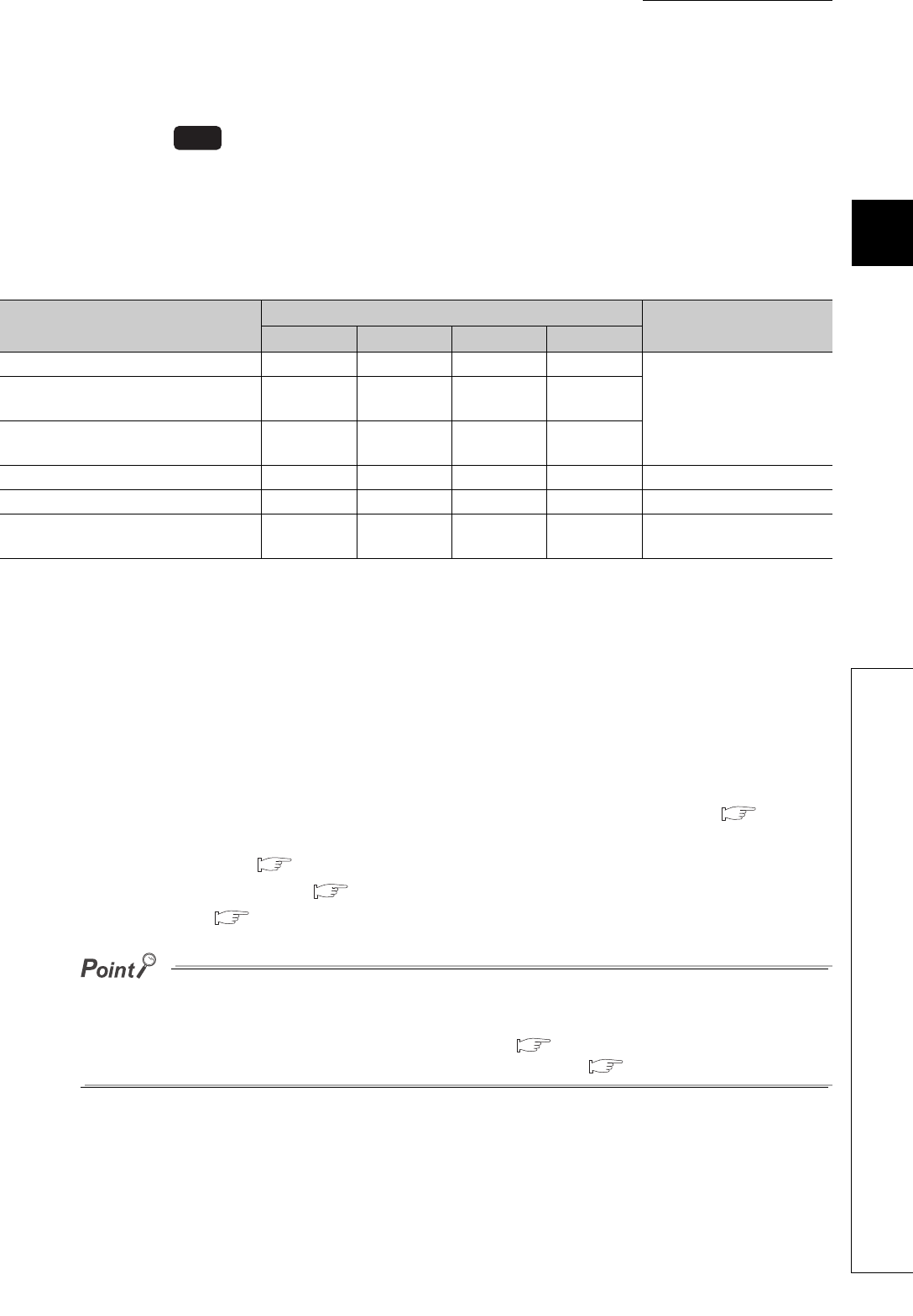
127
CHAPTER 3 SPECIFICATIONS
3
3.4 Buffer Memory Assignment
3.4.2 Details of the buffer memory
(36)CH E
2
PROM's PID constants read instruction (Un\G62, Un\G94, Un\G126,
Un\G158)
PID constants are read from an E
2
PROM and stored in the buffer memory by using this instruction. Setting this
buffer memory area to Requested (1) stores the value backed up in the E
2
PROM in the buffer memory.
(a) Buffer memory areas to store set value of E
2
PROM
The following table lists the buffer memory areas whose set value is read.
(b) Setting range
• 0: Not requested
• 1: Requested
(c) Default value
The default values are set to Not requested (0) in all channels.
(d) Precautions
When Requested (1) is set, do not perform the following operations. An incorrect value may be stored in the
E
2
PROM.
• Change of the set value of the buffer memory read from the E
2
PROM by this instruction ( Page 127,
Section 3.4.2 (36) (a))
•E
2
PROM back up ( Page 270, Section 4.30)
• Default setting registration ( Page 58, Section 3.3.3 (5))
• Auto tuning ( Page 176, Section 4.6)
● When the initial setting by a programming tool is already configured, PID constants should be backed up to an E
2
PROM
after the auto tuning. Turning on this instruction at the next start-up can omits the auto tuning.
● This instruction is enabled in the setting mode or operation mode. ( Page 56, Section 3.3.3 (1))
However, it is disabled when CH Auto tuning instruction (Yn4 to Yn7) is ON. ( Page 176, Section 4.6)
Buffer memory area name
Buffer memory address
Reference
CH1 CH2 CH3 CH4
CH Proportional band (P) setting Un\35 Un\67 Un\99 Un\131
Page 105, Section 3.4.2 (15)
CH Heating proportional band (Ph)
setting
Un\35 Un\67 Un\99 Un\131
CH Cooling proportional band (Pc)
setting
Un\720 Un\736 Un\752 Un\768
CH Integral time (I) setting Un\36 Un\68 Un\100 Un\132 Page 107, Section 3.4.2 (16)
CH Derivative time (D) setting Un\37 Un\69 Un\101 Un\133 Page 107, Section 3.4.2 (17)
CH Loop disconnection detection
judgment time
Un\59 Un\91 Un\123 Un\G155 Page 124, Section 3.4.2 (33)
Common


















